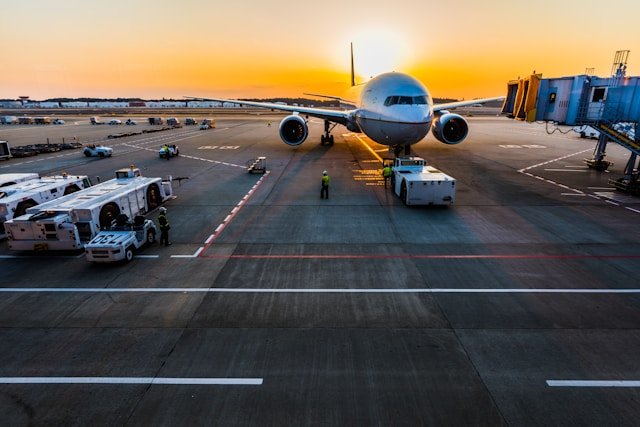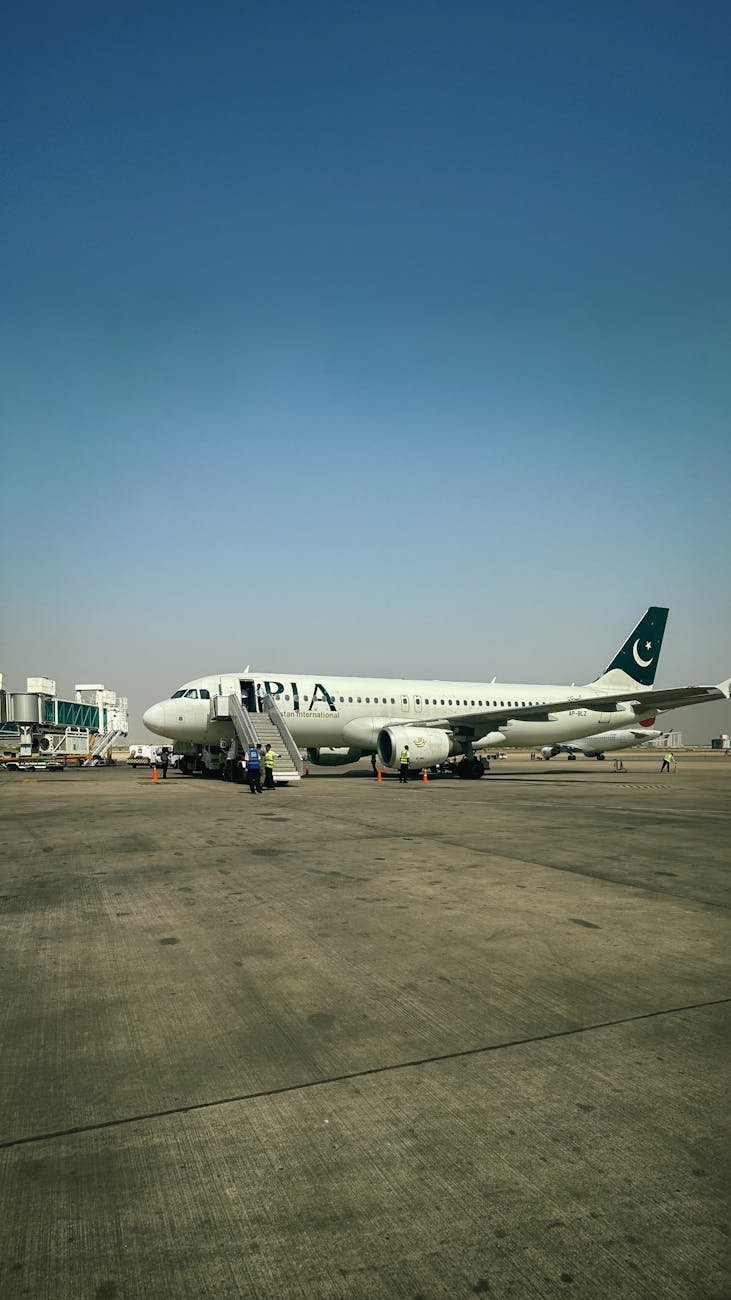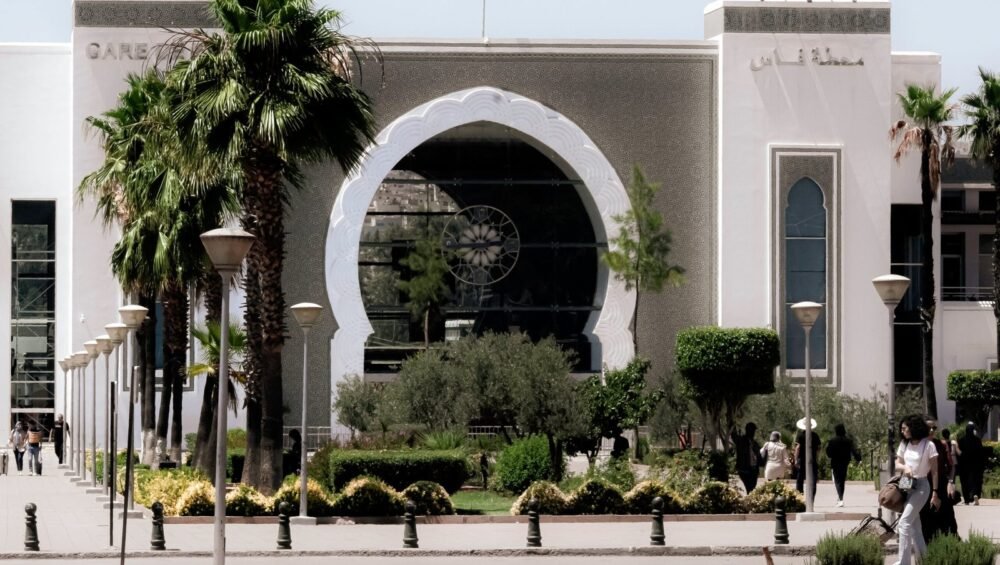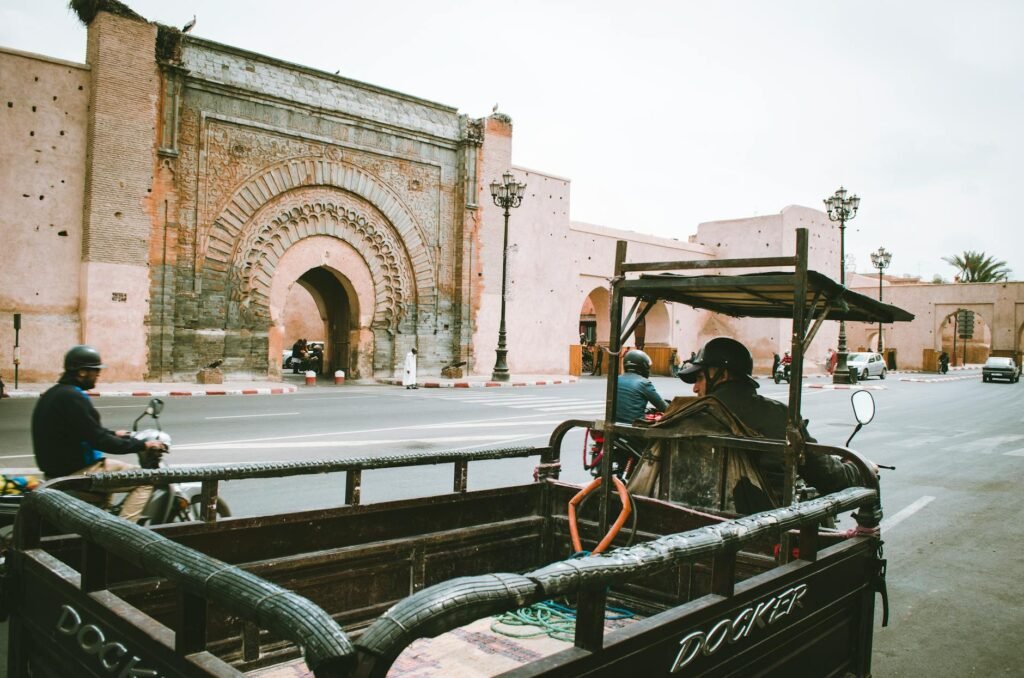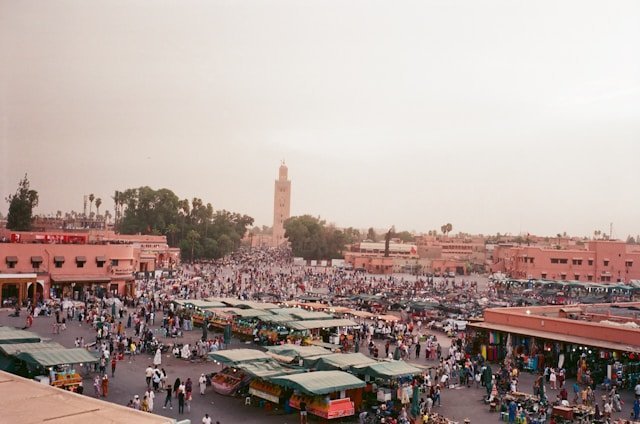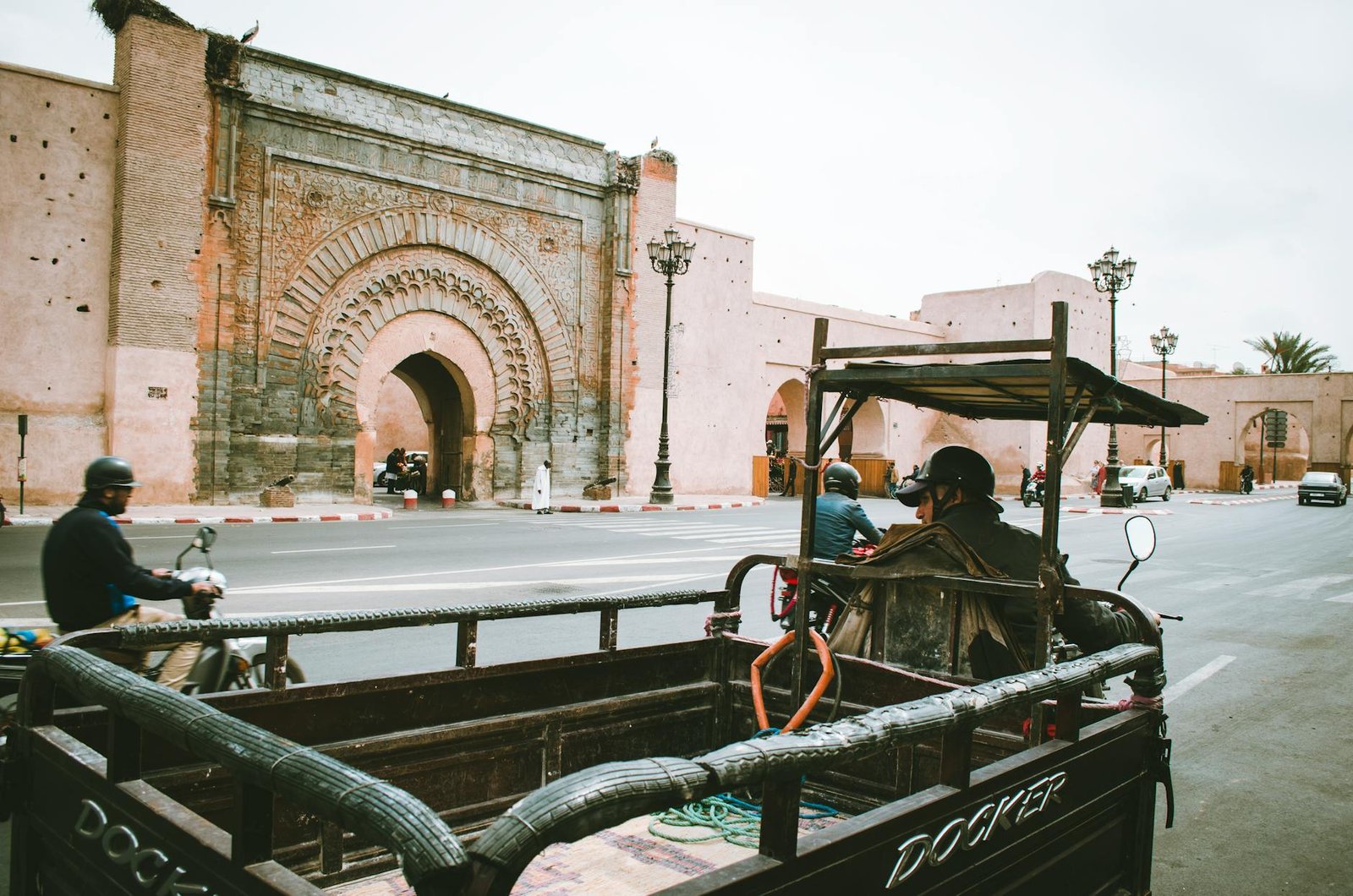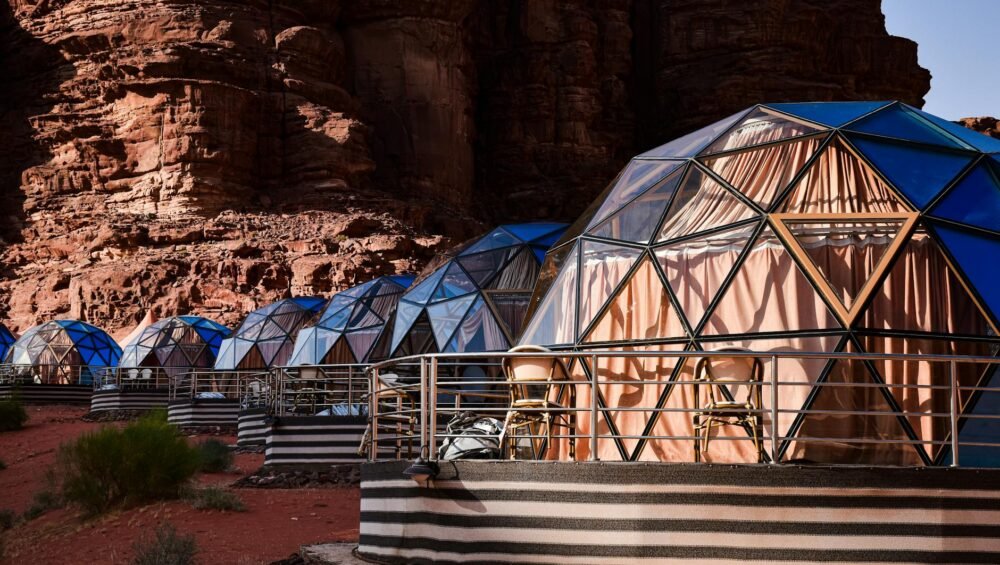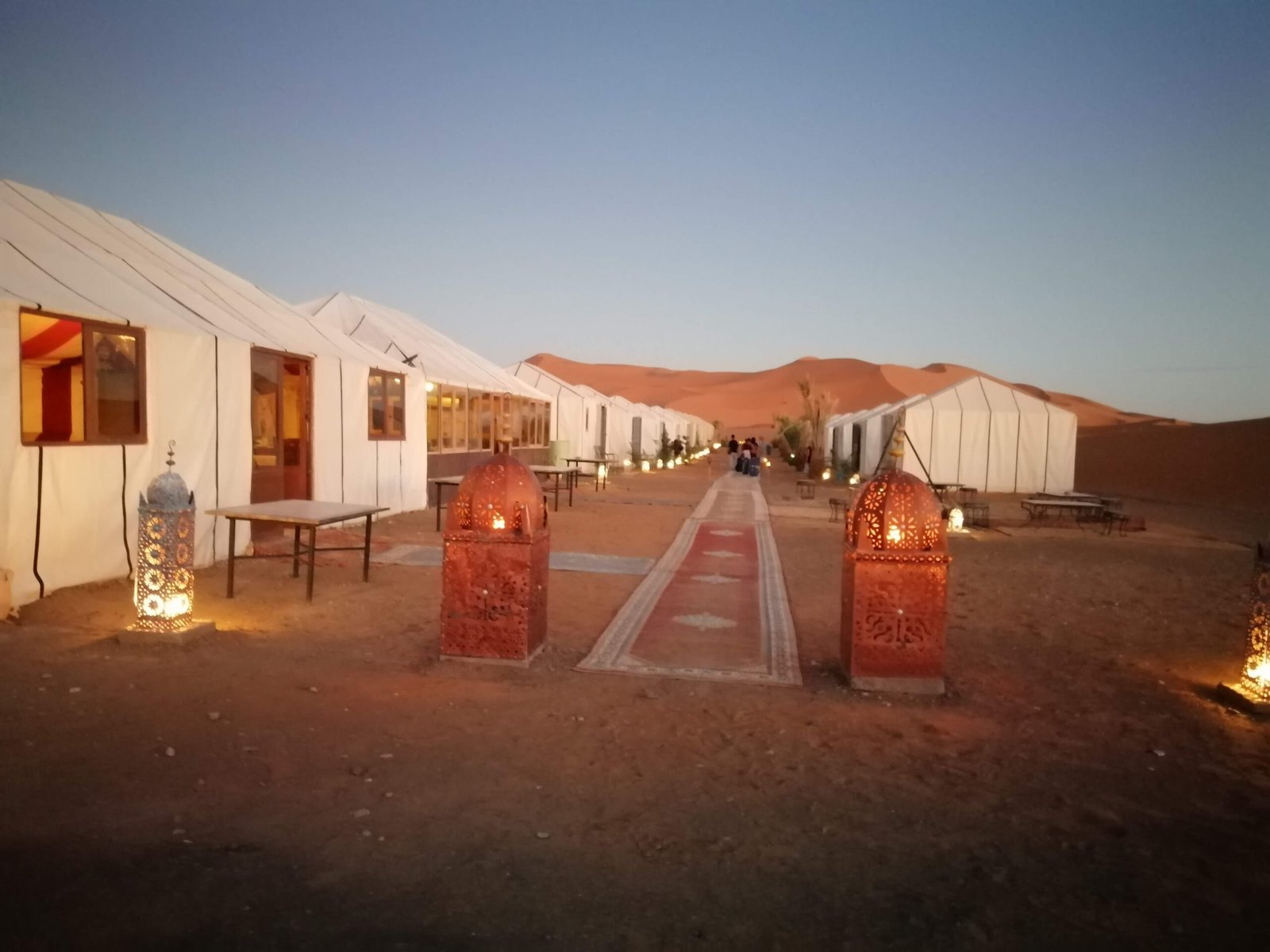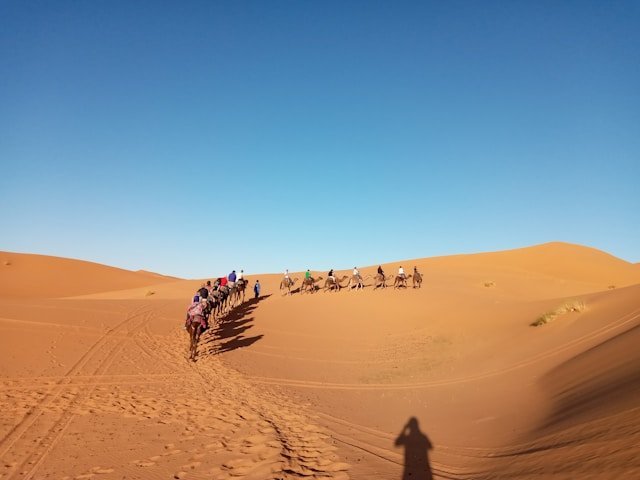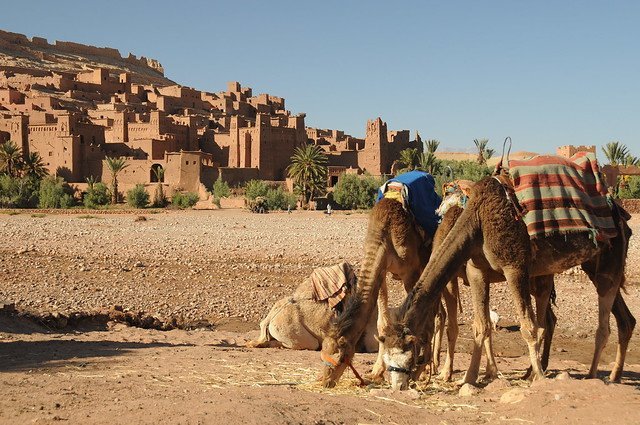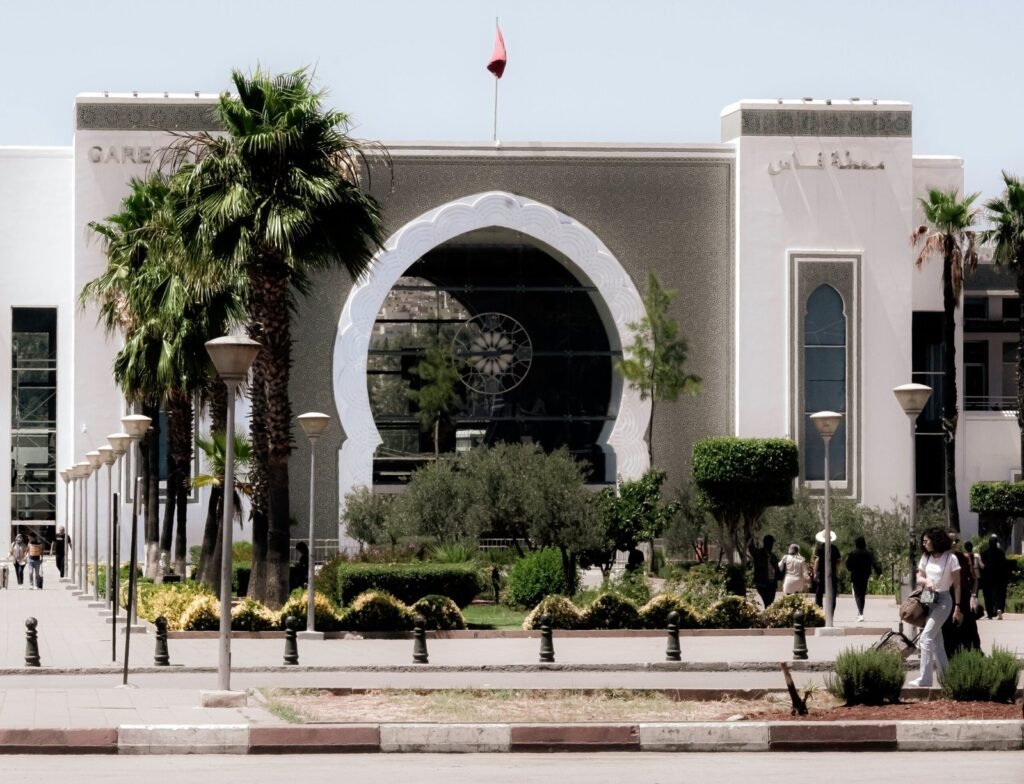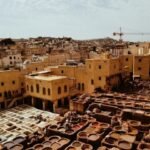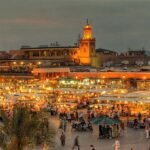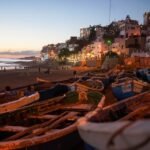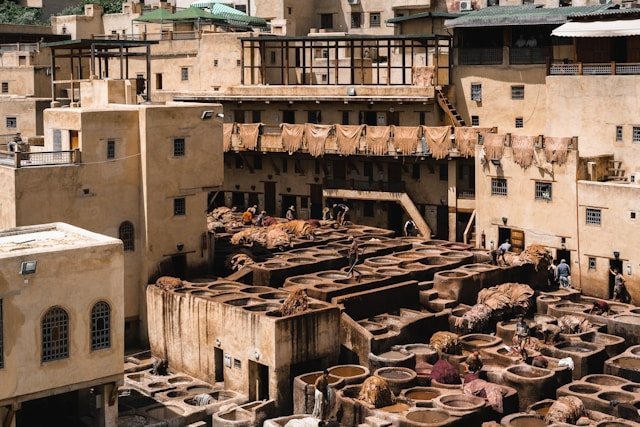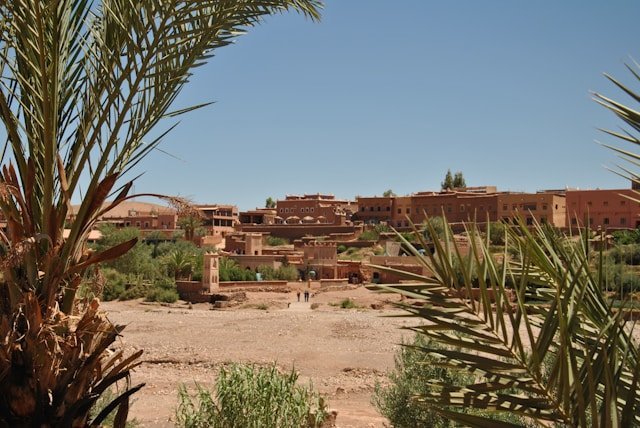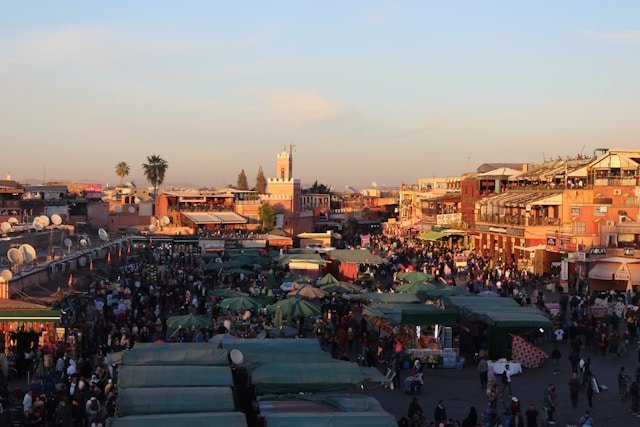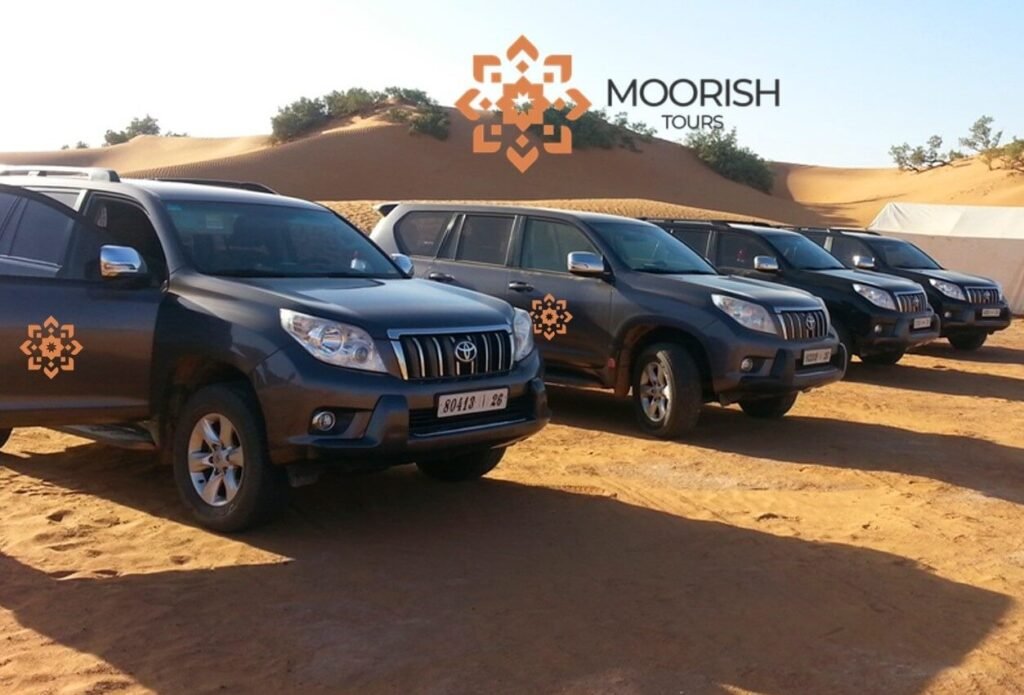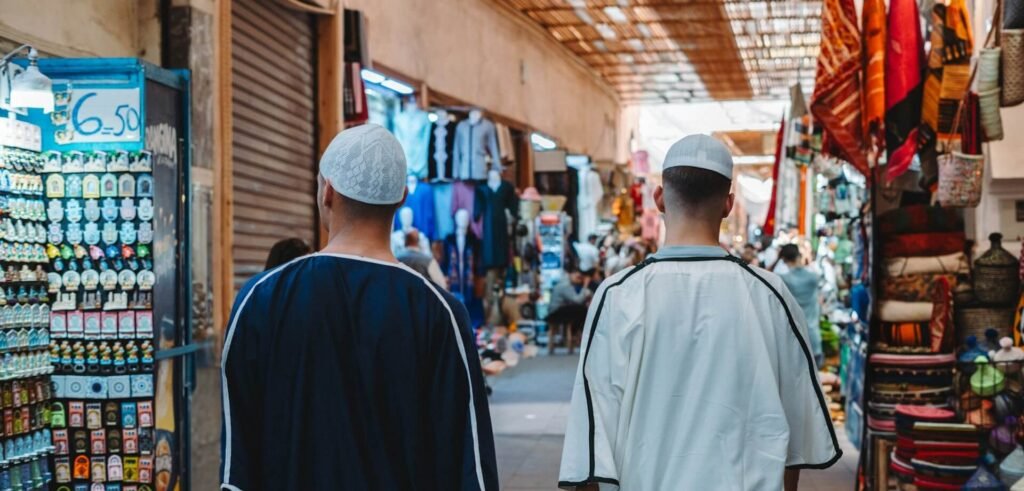5 days from marrakech to merzouga
5 days from marrakech to merzouga




Price
On request
Duration
4 Days
Max Peaple
22
Min Age
12+
Overview of Morocco itinerary 5 days from marrakech
Join us on a private 5-day desert tour from Marrakech. Over the course of 5 days in Morocco, you will get to see many incredible places and experience the best of Morocco’s landscapes and culture in a short time.
Your journey will start with a drive through the High Atlas Mountains, where you will cross the famous Tizi-N-Tichka pass, offering breathtaking views. You will visit the historic Ait-Ben-Haddou Kasbah, a UNESCO World Heritage site known for its unique architecture. We will also stop in Ouarzazate, a city often called the “Gateway to the Sahara” and known for its film studios and old kasbahs.
Next, we will explore the Draa Valley, home to Morocco’s longest river and beautiful palm groves. Our journey will take us to Rissani, a town with a rich history and vibrant local market. The highlight of the trip is Merzouga desert, where you will experience the magic of the Sahara Desert. Here, you can ride camels over the golden sand dunes, watch stunning sunsets and sunrises, and spend a memorable night in a desert camp under a star-filled sky.
For more adventure, we will take a 4×4 car tour to explore the deeper parts of the Merzouga desert. On our way back, we will visit the Dades Valley, known for its winding roads and impressive rock formations, and the Todra Gorges, with its towering canyon walls. We will also stop at the historic Amridil Kasbah to admire its traditional design and learn about life in the old times.
The tour will finish as we return to Marrakech, leaving you with unforgettable memories of Morocco’s diverse beauty and culture.
Highlights for 5 days tour from marrakech to merzouga
- High Atlas Mountains: Scenic drive through the mountains and the Tizi-N-Tichka pass with panoramic views.
- Ait Ben Haddou Kasbah: Explore the famous UNESCO World Heritage site featured in many movies and TV shows.
- Ouarzazate: Visit the Atlas Film Studios and Taourirt Kasbah, known as the “Gateway to the Desert.”
- Draa Valley: Enjoy picturesque views of palm groves, traditional Kasbahs, and Berber villages.
- Camel Trekking in Merzouga: Experience a camel ride over the stunning Erg Chebbi sand dunes and watch the magical desert sunset.
- Luxury Desert Camp: Spend the night under the stars in a unique blend of traditional nomadic and modern luxury tents.
- Nomadic Lifestyle Experience: Visit nomads in their handmade tents and learn about their way of life while sipping Berber tea.
- Khamlia Village: Enjoy live Gnaoua music and dance performances from locals with sub-Saharan roots.
- Merzouga Lake: See the seasonal wild lake, known for attracting flamingos and other wildlife.
- Todra Gorges: Walk through the towering red cliffs of the Todra Gorges, a natural wonder perfect for exploration.
- Dades Valley: Discover the unique “monkey fingers” rock formations and stunning viewpoints.
- Rose Valley: Visit Kalaat M’Gouna, famous for its rose products and the annual Rose Festival.
- Amridil Kasbah: Explore this well-preserved Kasbah surrounded by the palm groves of Skoura.
5 Day private Morocco Tour info :
Price includes:
- Specialized bilingual guide
- Private Transport
- Transportation service for both pickup and drop-off is provided.
- Breakfasts.
- Accommodation
- Each participant will have the opportunity to ride a camel and witness the sunrise or sunset
- Tips
- Entry Fees
- Drinks
- Lunches
Morocco 5 day itinerary from marrakech to mersouga
Day 1 : Marrakech – High Atlas Mountains – Telouat Kasbah – Ait Ben Haddou – Ouarzazate
Your 5 days in Morocco begin with an early pick-up from your accommodation or the airport in Marrakech. We will travel through the beautiful High Atlas Mountains, crossing the Tizi-N-Tichka pass. Along the way, we’ll stop for stunning views of the landscape.
Next, we visit the well-known Ait Ben Haddou Kasbah, a fortified village recognized as a UNESCO World Heritage Site. This site has appeared in famous movies like Gladiator, Alexander, and The Mummy, as well as the TV show Game of Thrones. We will then continue to Ouarzazate, known as the “Gateway to the Desert.” Here, we’ll have dinner and spend the night in a comfortable hotel.
Day 2 : Ouarzazate – Agdz – Draa Valley – Nkob – Merzouga Desert – Camel Trekking – Luxury Camp
After breakfast, we explore Ouarzazate, including a visit to the Atlas Film Studios, where many movies were filmed, and the historic Taourirt Kasbah. We then head to Agdz and drive through the Draa Valley, the longest river in Morocco. We’ll enjoy views of palm trees, Kasbahs, and Berber villages. Lunch will be in Nkob or Alnif.
In the afternoon, we continue to the Merzouga Desert, passing through Rissani. Upon arrival at the stunning Erg Chebbi sand dunes, we’ll take a camel ride into the desert. We’ll pause to watch the sunset from a high dune before heading to our luxury camp. The camp combines traditional nomadic tents with modern comforts. Dinner and traditional Berber music around the campfire await, under the starlit sky. We’ll spend the night at the camp.
Day 3 : Explore Merzouga – Nomads – Khamlia – Merzouga Lake – Palm Groves
We begin the day early to watch the sunrise in the desert, followed by breakfast. We return to Merzouga by camel, where our driver will be waiting. Today is dedicated to exploring the Merzouga region, known for its sand dunes, lakes, fossils, and oases.
First, we visit an old eyeliner mine, then meet nomads in their handmade tents and learn about their lifestyle while enjoying Berber tea. We continue to Khamlia village to experience Gnaoua music and dance, performed by locals whose ancestors came from sub-Saharan Africa. Lunch will be at a local restaurant.
In the afternoon, we walk through the palm groves and visit the wild lake of Merzouga, also called Flamingo Lake. We end the day with dinner and an overnight stay at a hotel.
Day 4 : Merzouga – Rissani – Erfoud – Todra Gorges – Dades Valley
After breakfast, we leave the desert and head to Rissani, an ancient capital and current trading hub with a lively market on specific days. We’ll visit the local souk and then travel to Erfoud to see a fossil workshop.
We continue through the palm groves of Touroug and Tinjdad to reach the Todra Gorges, where the river has created a deep canyon with high red cliffs. This area is perfect for exploring and is popular with rock climbers. Lunch will be at a local restaurant.
We then head to Dades Valley, passing Boumalne Dades and stopping at unique rock formations called “monkey fingers” and a viewpoint overlooking the valley. Dinner and overnight stay will be at a hotel in the valley.
Day 5 : Dades Valley – Rose Valley – Skoura – Amridil Kasbah – High Atlas Mountains – Marrakech
On the last day, we visit the Rose Valley in Kalaat M’Gouna, known for its annual Rose Festival in May, where locals sell rose-based products. We continue through the Skoura palm groves and visit the Amridil Kasbah.
After a lunch break in Ouarzazate, we drive through the High Atlas Mountains and Tizi-N-Tichka pass, heading back to Marrakech. We will drop you off at your accommodation or the airport, marking the end of your tour.
IMPORTANT: This is just a suggested Morocco tour plan. If it doesn’t fit your needs, please reach out to us. We are happy to create a different itinerary that matches your preferences and the length of your stay. We specialize in planning personalized and custom tours all over Morocco.
The cost of the tour can change depending on the number of people. The more people who join the tour, the lower the price per person will be. This is because the transportation cost is fixed and shared among all participants. The price also depends on the type of accommodation you choose. For an exact quote, please contact us.

